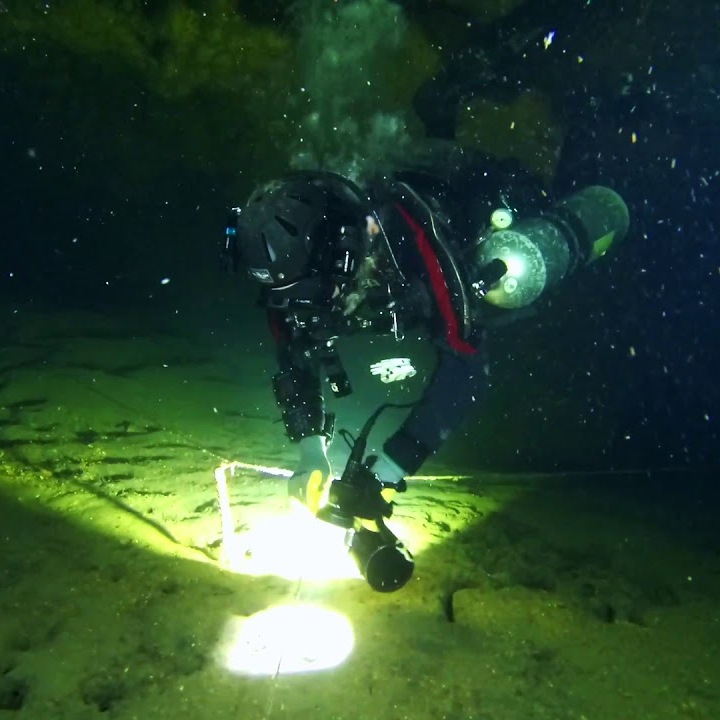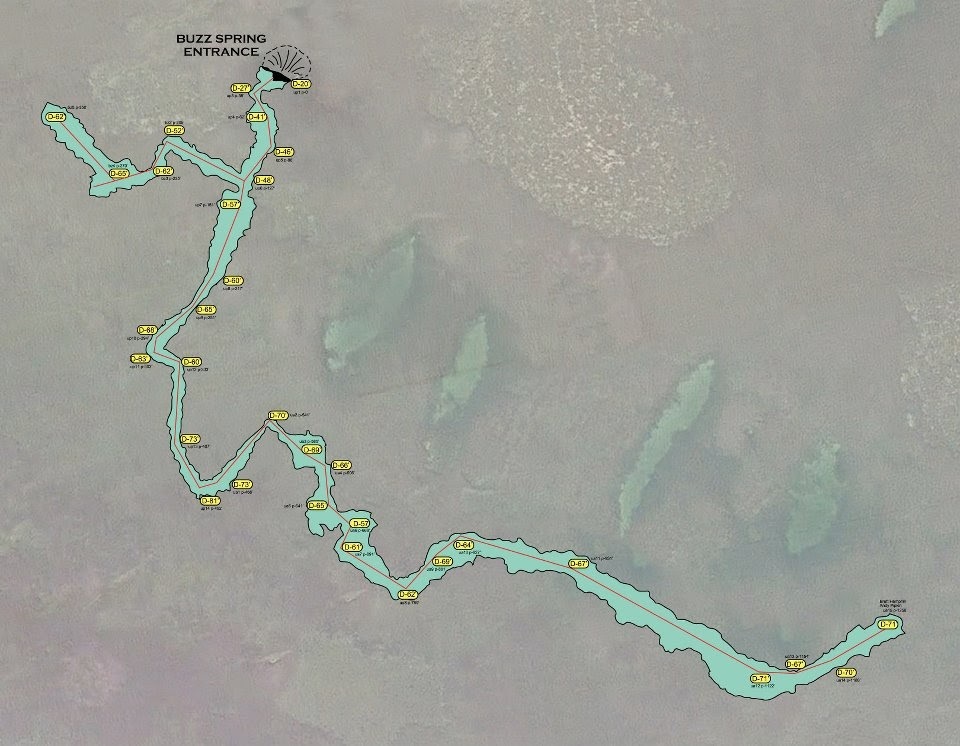Tragedy at Buzz Cave: Diver Jim Cummings


| Incident Location | Diver Full Name |
|---|---|
| USA, Homosassa, Florida, Buzz Cave | James Francis Cummings |
The Buzz Cave Disaster of 2007 remains a harrowing story in the diving community. An experienced yet overconfident diving instructor led two open water divers into a perilous cave system, resulting in a near-fatal tragedy. This transcript explores the events surrounding that ill-fated dive, the individuals involved, and the consequences of pushing limits in hazardous underwater environments. Here, we examine the instructor’s decisions, the divers’ experiences, and the broader context of diving safety.
The Decision to Enter Buzz Springs Cave
October 1, 2007
On this day, two open-water divers embarked on a dive led by their instructor, who abruptly changed course from their planned training in the Gulf of Mexico to the notorious Buzz Springs Cave System. The instructor, despite lacking proper cave-diving qualifications, assured his students that he was skilled in cave diving—a statement that would soon prove dangerously misleading. Without sufficient air, backup lights, or cave-diving experience, the divers followed him into the cave, unaware of the looming risks.
The Risks of Cave Diving
Cave diving requires specialized skills, equipment, and significant experience. Divers must be prepared with:
- Diving gear: high-quality, suitable for the narrow cave systems
- Diving computers: essential for monitoring depths and decompression
- Diving tanks: reliable air sources, often doubled for safety in long dives
- Diving suits: specially designed for the colder, darker conditions within caves The lack of these critical safety measures turned what was supposed to be a routine dive into a terrifying struggle for survival.
James Francis Cummings: The Adventurous Instructor
Early Life and Career
James Francis Cummings, known as Jim, was born on January 20, 1967, in Long Island City, Queens. Known for his quick wit and adventurous nature, he embraced challenges headfirst, often without considering the consequences. After graduating from Crystal River High School in 1985, he pursued a law degree and became a well-regarded attorney in Citrus County, though he faced personal and professional setbacks.
A Passion for Diving
Despite his legal career, Jim’s true passion lay in diving. He operated Offshore Adventure Dive Center in Crystal River, where he shared his love for the underwater world, creating a community of enthusiasts eager to explore Florida’s marine environments. Jim was especially driven to push boundaries, both for himself and for his divers, but his ambitious goals sometimes blurred the line between bravery and recklessness.
Project 1100: A Record-Breaking Ambition
Setting Goals Beyond Limits
Following his disbarment, Jim poured his energy into “Project 1100.” The project aimed to break the world scuba diving depth record of 1,044 feet, set by South African diver Nuno Gomez. His blog posts on MySpace reflected his obsession with reaching depths of 1,100 feet, even though he acknowledged the extreme hazards involved.

“It’s going to be physically taxing, life-threatening, and moderately expensive,” he wrote. “Any help—be it knowledge or monetary contributions—will be appreciated and recognized.”
In another post, he remarked: “Remember, I do not have a death wish. I intend to walk away from this 1,100-foot dive unharmed.”
Doubts from the Diving Community
To experienced divers, Jim’s ambitions sounded alarmingly audacious. Cave diving, especially at such depths, is perilous and requires both technical skill and extensive planning. The diving community viewed Jim’s determination with caution, recognizing that underestimating the dangers could have deadly consequences.
Discovering Buzz Spring
First Encounters with the Cave System
In early September, Jim explored a hole off the Gulf Coast, now identified as Buzz Spring. Initial sonar readings indicated depths exceeding 300 feet. Though dark and challenging to access, Buzz Spring intrigued Jim, especially as it was known for its unique marine biodiversity. The cave, hidden beneath a shallow water entry point, attracted both scientific explorers and ambitious divers despite its murky, silt-laden environment.
| Buzz Spring Characteristics | Details |
|---|---|
| Location | 7 miles west of Homosassa, Florida |
| Depth | Estimated at 300 feet |
| Entrance | A narrow, silty opening accessible from 3 feet of water |
| Biodiversity | Marine life adapted to dark, silty conditions |
| Environmental Conditions | Known for poor visibility and intricate passages |
Jim documented his excitement about the potential training opportunities Buzz Spring provided. His posts reflected both fascination and an underestimation of the dangers inherent to cave diving.
The Fateful Dive: September 30, 2007
Misleading Expertise
In late September, Jim, newly certified as an Open Water instructor, convinced two students, Harold Arnold and Donald Brittain, of his technical diving expertise. Though trained divers themselves, the two relied on Jim’s guidance, trusting his claims of competence. Unfortunately, according to accounts from other divers, Jim lacked experience in advanced techniques like using double tanks or helium gas mixes necessary for deep and technical dives.
A Sudden Change in Plans
On September 30, Jim led Harold and Donald on what was supposed to be a standard Advanced Open Water training dive. However, Jim veered off course, leading his students into Buzz Springs, a dangerous decision as neither diver had cave-diving certification or training.
“He had been to this cave before since discovering it on September 2,” a report later noted, “and likely believed he could guide his students safely in and out.”
Yet, as the divers would soon learn, cave diving under such circumstances was far more challenging than Jim anticipated. In the confined, silty environment of Buzz Spring, the lack of visibility and necessary diving equipment became a deadly mix.
Lack of Cave Training for an Open Water Class
Buzz Springs Cave was not suitable for the Advanced Open Water class Jim was conducting. Caves require specialized training due to their complex and enclosed structure, and they differ greatly from the open water conditions that these divers were accustomed to. Despite this, Jim led his students into the cave, where a series of fatal errors soon unfolded.
Some suspect that nitrogen narcosis, a well-known risk for divers, may have impaired Jim’s judgment. Narcosis effects can vary unpredictably, causing symptoms like confusion or overconfidence that may have clouded his thinking on this particular dive.
Breaking Diving Safety Rules: Entering with Limited Air
Ignoring the Rule of Thirds
One of the fundamental principles of safe cave diving is the rule of thirds, which mandates that divers reserve two-thirds of their air supply for exiting and emergencies. Jim began the dive into Buzz Springs with only a half tank of air, leaving little margin for error. This decision alone introduced serious risk to the dive.
Lack of Essential Equipment
Jim did not lay safety lines, use reels, or set up markers, all of which are critical tools for cave navigation. Without them, the divers had no way to navigate back in low visibility. Additionally, Jim’s failure to bring backup lighting further endangered the group, leaving them vulnerable in the dark, silt-heavy waters.
“The students were essentially on a ‘trust me’ dive,” relying entirely on Jim’s judgment to guide them through an environment for which they were ill-prepared.
The Descent into Darkness
Navigating Deep into Buzz Springs
The divers descended to around 30 feet before entering a narrow crack in the seafloor. Passing through tight restrictions one by one, they quickly lost sight of ambient light as they ventured deeper. Visibility in the cave ranged from 10 to 40 feet, but the silt and narrow passageways made conditions precarious. At approximately 100 feet, the ceiling and floor of the cave began to converge, resembling a typical Florida sinkhole filled with fine, powdery silt that could easily obscure vision.
Jim’s Decision to Turn Back
Suddenly, Jim signaled the divers to stop. He may have realized the growing dangers as he proceeded with inadequate air and no guiding lines. However, his decision to turn around in such tight quarters created a cloud of silt that obscured visibility for his students and himself. What should have been a straightforward exit became a disorienting, pitch-black situation.
Abandoning the Guideline: A Fatal Mistake
Solo Diving and Disorientation
In a critical and mystifying decision, Jim abandoned his students and the guideline, choosing instead to descend deeper into the cave. His actions left the two divers, both inexperienced in cave navigation, to fend for themselves in a disorienting environment. They were forced to retreat towards the entrance, fighting rising panic and fear.
Stranded and Disoriented
The students eventually decided to leave the cave when Jim failed to reappear, and they reported the incident to authorities after a 25-minute wait. A recovery effort began, involving the Sheriff’s Office, Coast Guard, and Florida Fish and Wildlife Commission.
Recovery of Jim Cummings
A Somber Outcome
On the morning of October 1, 2007, certified cave divers from Bird’s Underwater located Jim’s body at a depth of 93 feet. His tank was entangled in a rock within the cave, and he was found without a safety line, a basic cave diving protocol. Authorities speculated that narcosis and disorientation led to his abandonment of the guideline, resulting in his eventual depletion of air and his inability to find the exit.
“Narcosis may have played a major role in his disorientation,” a report concluded, “causing him to lose focus and separate from his students.”
Factors Contributing to the Tragedy
| Key Failures | Description |
|---|---|
| Ignoring Cave Diving Protocols | Entering with no safety lines, reels, or markers |
| Air Management Neglect | Starting with only half a tank, violating rule of thirds |
| Lack of Proper Equipment | No backup lighting, double tanks, or diving computers |
| Reckless Decision to Descend Solo | Leaving students unprepared and alone in the cave |
Lessons Learned from the Buzz Cave Disaster
The Buzz Cave Disaster underscores critical lessons in safe diving practices, particularly in hazardous cave environments. It highlights the need for proper training, equipment, and adherence to safety protocols.
Essential Cave Diving Rules
- Plan Your Dive and Dive Your Plan: Every dive, especially in caves, must be meticulously planned with strict adherence to the plan. Deviating can introduce unnecessary and deadly risks.
- Proper Equipment: Cave diving requires redundant air tanks, specialized lighting, and safety lines to ensure safe navigation and exit.
- Know Your Limits: Diving beyond one’s training level or equipment capacity is reckless. Only divers trained and equipped for cave diving should enter these environments.
